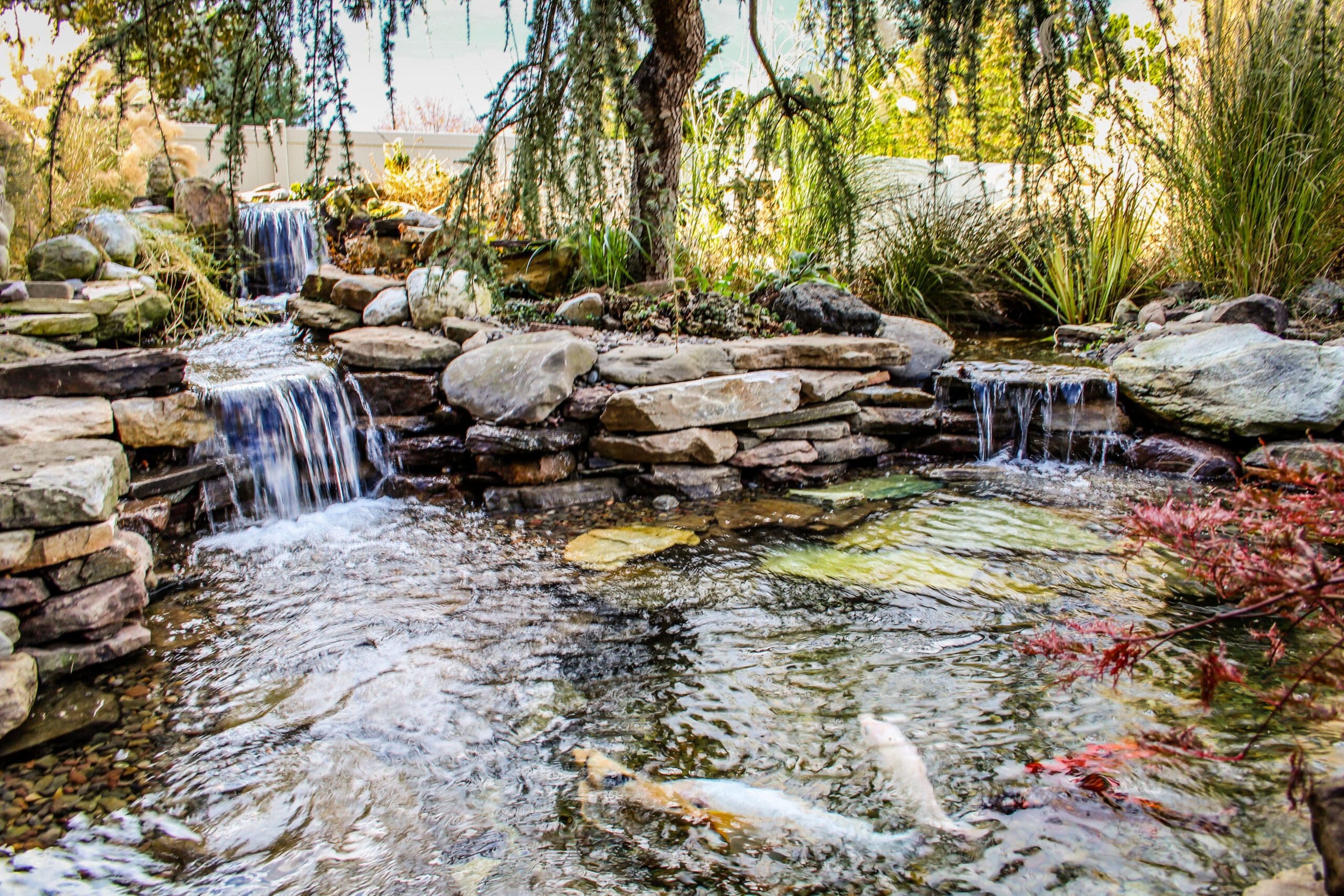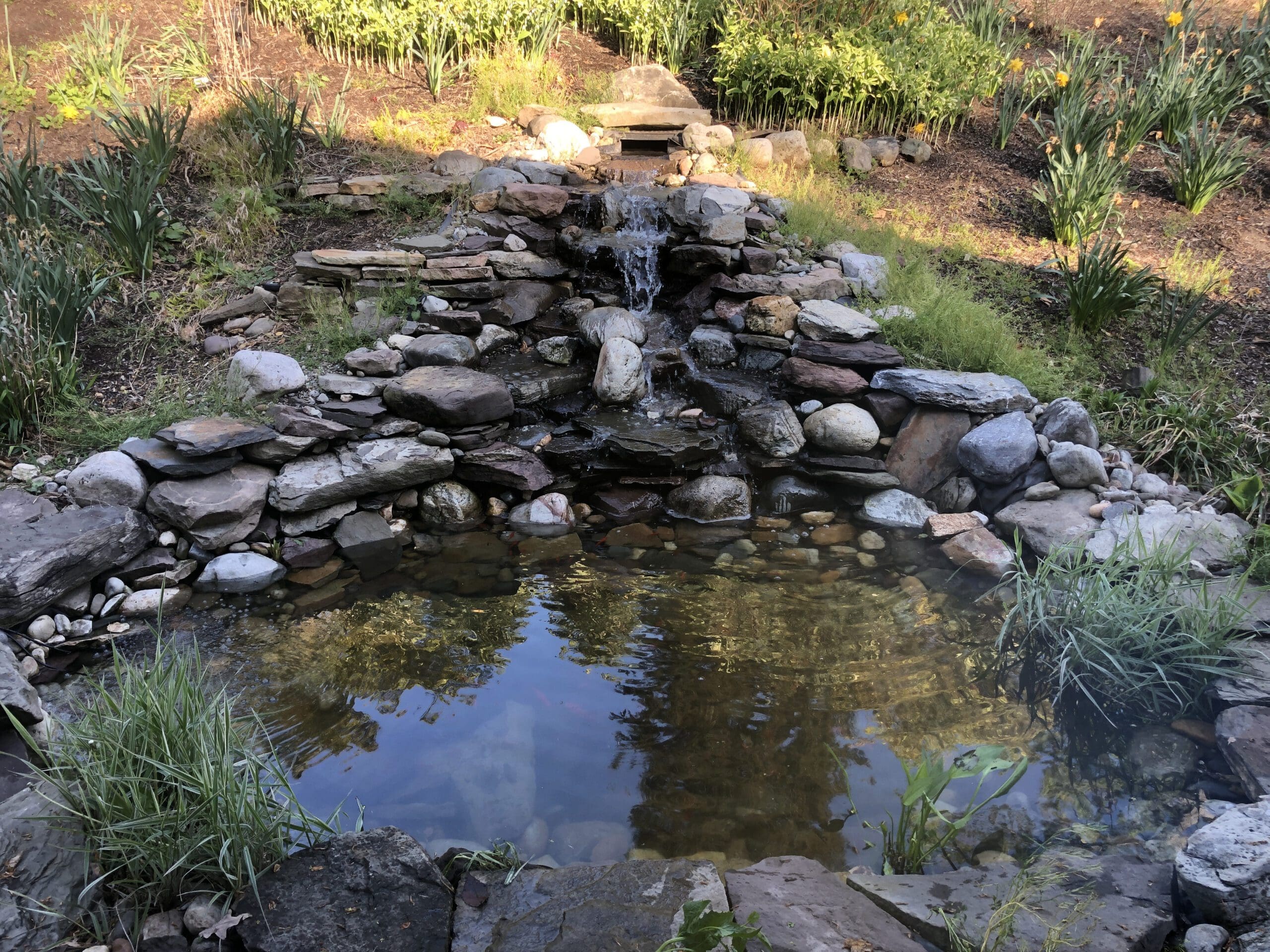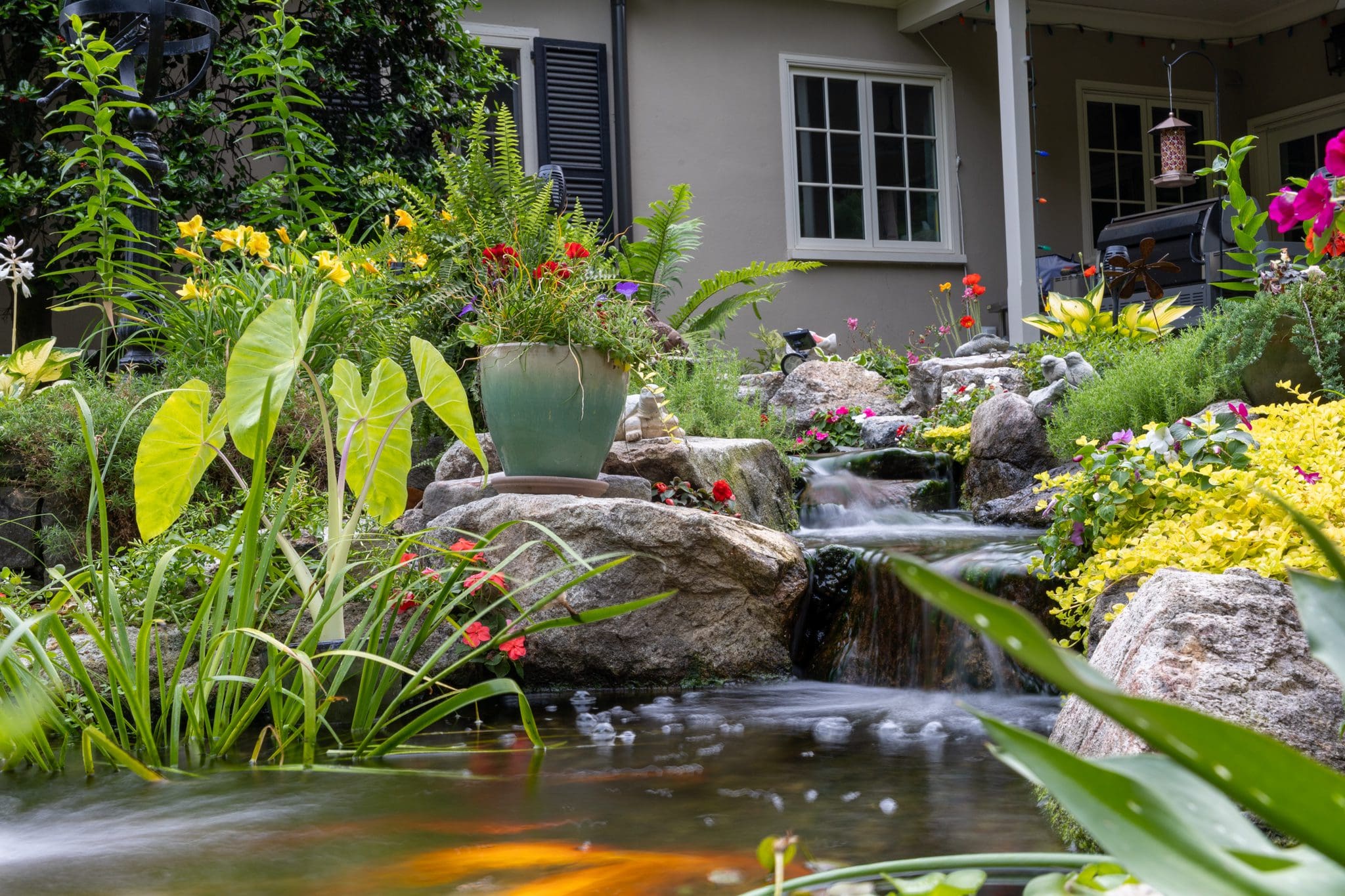Most pond owners know the importance of clean pond water. Not knowing how to get or keep clean pond water can be quite a challenge, but we can help! Our pond cleaning services can add the finishing touch to your pond.
In addition, pond algae seems impossible to control at times. Algae is the most basic plant on the planet and can seem like the biggest pond maintenance problem to many pond owners. Algae is particularly heavy in the spring, when temperatures are warming, nutrients are plentiful, and the days are lighter and longer.
Add those factors with the fact that plants like water lily or water iris, have not really “woken up” from their winter slumber so they are not challenging for those nutrients and you have the recipe for a lot of algae!
Clean Pond Water Rules
- Maintain a healthy fish population
If you have more than 10” of fish for every 100 gallons of water, your pond is likely over-populated. Excessive fish waste can cause an imbalance in pond water. Consider finding some of them a new home.
- Don’t over-feed your fish
When you feed fish more than they can eat, the uneaten food is left to decay in the pond. Be careful not to feed your fish more than once per day, and no more than they can eat in 2 to 3 minutes. Remove all excess, leftover food
- Create a proper balance of plants
At season’s peak, you should have no more than 40% to 60% of the surface area of your pond either covered or shaded by pond plants. Too many pond plants can cause oxygen deficiencies at night due to the photosynthetic process, when the plants take in oxygen and give off carbon dioxide.
- Choose the right size pump for your pond
You should be circulating the entire pond’s water volume a minimum of once every hour. Make sure your pump’s flow isn’t restricted by debris and be careful not to pump water higher than it was intended. Every pump has its flow limitations. Refer to the chart on the outside of the pump’s box to make sure you’re making the right choice for your pond.
- Choose proper filtration for your pond
Your filter should match the size of your pond. Remember, most manufacturers rate their filters based on ideal circumstances, and if you exceed those, your filter becomes less effective. Always up-size your koi pond filter so that it can handle more than the capacity of your pond. Also remember to clean your filter according to the manufacturer’s instructions.
- Keep your clean pond water cool during the dog days of summer
When clean pond water exceeds 75º Fahrenheit, it has a more difficult time retaining acceptable levels of dissolved oxygen. This is why it’s important to have your pond shaded by aquatic plants (see tip #3). Fish need oxygen to survive. If you see them at the pond’s surface gasping for air, add an aerator to help them during times of extreme heat.
And don’t forget regular pond maintenance. Cleaning a pond with fish is not an easy task, but our trained staff handles everything for you.
Pond Algae Removal

So what if you do all 6 steps to clean pond water and you still have a lot of algae? Read on for pond help…
Pond Algae seems impossible to control at times. Algae is the most basic plant on the planet and can seem like the biggest problem to many pond owners. Algae is particularly heavy in the spring, when temperatures are warming, nutrients are plentiful, and the days are lighter and longer.
Add those factors with the fact that plants like water lily or water iris, have not really “woken up” from their winter slumber so they are not challenging for those nutrients and you have the recipe for a lot of algae!
Steps for Pond Algae Removal
- Physically Remove String Pond Algae
This is your best method for removing string algae. Though it may seem dirty, it is essential to do before treating so you can reduce the amount of decay. Pull the biggest bits of string algae near the base, pull hard, and put it into a bucket. It can sometimes be difficult to pull out a lot at one time since it is soft and malleable.
Physical removal is the fastest way to get algae out of your pond and take the next step to crystal clear pond water. Winding around fingers/hands is the best approach aside from a toilet or long lint brush to roll it up with. The hand approach is easier because the thin strands are difficult to clean away from brush bristles. Wearing gloves are not required but may keep you cleaner. Use a long-handled brush to pull out the algae at depth.
- Treat Water and Kill Off Remaining Pond Algae
Some sources suggest using a pond algaecide for, but we never recommend unnatural chemicals even if the labels state they are safe for fish and plants. We stick to natural solutions for algae control and recommend a combination of Aquascape products with bacteria/enzymes like a pond clarifier to speed up the process. Normal green hair-like or carpet/blanket algae which grows on pond walls and some rocks is best left untouched and completely acceptable.
- Add Extra Plants and Remove Decay
Place quick growing and reproducing plants in your pond to increase oxygen content. Make sure you take out the decaying plants first, as they will not help your fight against algae. Choose plants that will grow larger, consume a lot of nutrients, and will not require a lot of upkeep.
We recommend Water Lettuce, Irises, and Cattails for the spring and summer. You can solve many problems as a pond owner by placing plants to out-compete algae and suspend algae for excess nutrients. Just be careful to not add in any plants that already have string algae attached!
- Find the Cause of the Pond Algae Growth
Look for potential causes of string algae by testing your water quality. If algae is growing at a problematic level than it is time to look beyond the algae and mat and deeper into the pond chemistry. High pH and Phosphorous levels are the leading cause of string algae.
Examples of what can cause high pH are the clearing of algae blooms, excessive plant growth, overstocking of fish, and the introduction of foreign materials (untreated concrete, rocks containing limestone or calcium/granite).
The most common cause of high phosphorous is from fertilizers that have leaked into the pond water. Iron is also a major contributor as well as grass clippings that find their way into the pond after mowing the lawn. Scoop green grass blades out immediately.
- Install a dosing system or UV light.
A dosing system is like an IV for your pond– it can put algae control in your pond on a regular basis. A UV light kills string algae.
If you can’t (or don’t want to) take care of your pond algae we certainly can. AquaReale specializes in koi pond cleaning, with pond algae removal, and water feature cleaning. Contact us to see how we can help you.






